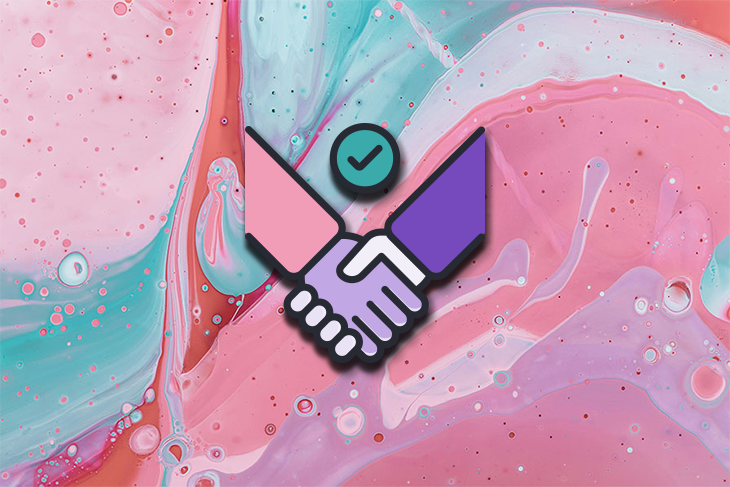I have yet to find a UX designer who loves job interviewing. The stakes are high, the stress is sometimes soul-crushing, and there isn’t a worse feeling in the world than going blank after hearing an interview question.

Worst of all, you might be an incredible designer with a great skill set, but find interviewing to be a challenge. That is a tough spot to be in.
Sadly, there’s no shortcut here. Preparation, preparation, preparation. The more prepared you are, the higher your chances of nailing that dream job.
A no-brainer way to prepare is to practice the most common interview questions. If you already know there’s a high chance you’ll hear a given question, there’s no excuse to be unprepared to answer.
In this article, we’ll go through some of the most frequently asked UX design job interview questions and dive deeper into what recruiters want to know, how to answer the questions, and what pitfalls you should avoid. The most common questions you should expect to hear in a UX design job interview include:
This question might seem like a small-talk warm-up, but it’s not! It allows you to pitch yourself as a candidate and steer the interview in the direction you want by highlighting the most talk-worthy parts of your experience.
Don’t waste it.
Again, although it might sound like a warm-up question, it’s actually a pretty important one. You want to both showcase your understanding of what the role entails, as well as demonstrate your genuine excitement and interest in the role.
By getting more context on the most impactful products you’ve worked on, interviewers can gauge if you’ve experience working on high-stakes initiatives.
If you’ve worked on a product used daily by 300 million users, you’ll probably have better risk management and validation skills than if your biggest product were an internal app for five users.
Your most significant success, similar to the most impactful product you worked on, is a good indicator of how mission-critical your past work was. Go for a jaw-dropping response. If you can’t daze the interviewer with your biggest success, you won’t win them over with other answers.
It’s not a trick question; interviewers are genuinely interested in the times you failed. Similarly to your biggest successes, your biggest failures showcase the type of work you did and what type of lessons you’ve learned in the past. It’s also a good personality check.
There’s a high chance you’ll be asked to present a portfolio case during the interview. It’s an ultimate presentation skills test, so make sure you know your cases line by line.
Each company, team, and individual has their own approach to solving problems. By getting to know your process better, the interviewer will know if your work style matches theirs and if you don’t miss key pieces.
Different people have different work styles. Recruiters want to know if your approach to teamwork and collaboration process matches their culture.
Stakeholder management is a key part of the UX design process and is often also the most difficult part of the job. You have to prove that you can professionally deal with difficult stakeholders.
This question serves two purposes: to show you are truly interested in the role and to validate if you want to proceed to the next steps.
Most of the interview questions you’ll encounter are behavioral. These are the “tell me about the time you did X ” type of questions. Some common ones include, “Tell me about a time you…
The problem in trying to anticipate which behavioral questions you’ll be asked is that there are thousands of variations of those questions! Preparing for every possible scenario would take ages.
A better approach is to practice telling a few of the most impactful stories in your career. List out the pivotal moments that you would want to bring up during an interview — both good and bad — and try to remember every detail of what happened. Then, practice telling these stories. Do this in front of a mirror, out loud using a voice recorder app, or on your computer camera.
That way, when you get a behavioral question, odds are you’ll be able to use one of those stories as a base for the answer, and you’ll have already practiced talking about them out loud. Remember, it’s one thing to say them in your head, but it’s actually very different when you start speaking as if you’re telling it to another person.
Plus, the more diverse your stories are, the more behavioral questions they’ll be able to answer.
Preparing 10 or so detailed and impactful stories will help you prepare better than trying to memorize answers for a hundred various behavioral questions.
Good luck with your interview process!
LogRocket's Galileo AI watches sessions and understands user feedback for you, automating the most time-intensive parts of your job and giving you more time to focus on great design.
See how design choices, interactions, and issues affect your users — get a demo of LogRocket today.

AI wireframe tools are everywhere but they don’t all work the same way. I tested Visily, UX Pilot, Uizard, Mokkup AI, and Figma Make to see which tools are best for non-designers, fast iteration, and serious UX work.

Small actions can have large consequences in complex systems. Here’s how UX designers can manage dependencies so users feel informed and in control rather than blocked or blindsided.

This article examines when hero sections are necessary in digital products, when they create friction, and how to evaluate them using UX goals, primary actions, user flow impact, and real-world alternatives.

AI speeds up tasks like research synthesis, ideation, and first-draft wireframes, but it can’t replace clarity, taste, or decision-making. Here’s a grounded look at what AI actually does well in UX right now.